
A footman is a male domestic worker employed mainly to wait at table or attend a coach or carriage.

A footman is a male domestic worker employed mainly to wait at table or attend a coach or carriage.
Originally in the 14th century a footman denoted a soldier or any pedestrian, later it indicated a foot servant. A running footman delivered messages. [1] He might run beside or behind the carriages of aristocrats, running alongside the coach to make sure it was not overturned by such obstacles as ditches or tree roots. A footman might also run ahead to the destination to prepare for his lord's arrival. [2]
The name was applied to a household servant who waited at table and attended, rode on his employer's coach or carriage in case of untoward incidents. [1] In many cases, a footman was expected to serve as an armed bodyguard. Many were skilled with pistols to defend their employer's coach against highwaymen.
The first footman was the designation given to the highest-ranking servant of this class in a given household. The first footman would serve as deputy butler and act as butler in the latter's absence, although some larger houses also had an under-butler above the first footman.
In a larger household, various footmen might be assigned specific duties (for which there might be a traditional sequence), such as the silver specialist. Usually the footmen performed a range of duties which included serving meals, opening and closing doors, carrying heavy items, or moving furniture for the housemaid to clean behind. The footmen might also double as valets, especially for visiting guests.
Male servants were paid more than female servants (because some were expected to support a wife and children)[ citation needed ] and footmen were something of a luxury and therefore a status symbol even among the servant-employing classes. They performed a less essential role than the cook, maid or even butler, and were employed only by the grandest households. Since a footman was for show as much as for work, his good looks were highly prized, including a tall stature and well-turned legs, shown off by the traditional footman's dress of stockings below knee breeches. Footmen were expected to be unmarried and tended to be relatively young; they might, however, progress to other posts, notably that of butler. One 19th-century footman, William Tayler, kept a diary which has been published. He was, in fact, married, but he kept it secret from his employers and visited his family only on his days off. [3]
Once a common position in great houses, the footman became much rarer after World War I as fewer households could afford large retinues. The role is now virtually a historic one, although servants with this designation are still employed in the British Royal Household, wearing a distinctive scarlet livery on state occasions. [4]

A carriage is a two- or four-wheeled horse-drawn vehicle for passengers. Second-hand private carriages were common public transport, the equivalent of modern cars used as taxis. Carriage suspensions are by leather strapping or, on those made in recent centuries, steel springs. Two-wheeled carriages are usually owner-driven.
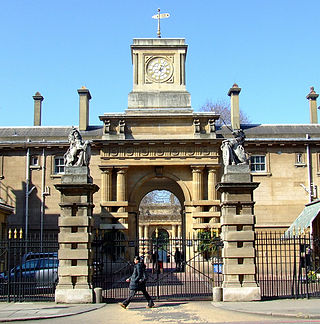
The Royal Mews is a mews, or collection of equestrian stables, of the British royal family. In London these stables and stable-hands' quarters have occupied two main sites in turn, being located at first on the north side of Charing Cross, and then within the grounds of Buckingham Palace.

A livery is an identifying design, such as a uniform, ornament, symbol or insignia that designates ownership or affiliation, often found on an individual or vehicle. Livery often includes elements of the heraldry relating to the individual or corporate body featured in the livery. Alternatively, some kind of a personal emblem or badge, or a distinctive colour, is featured.
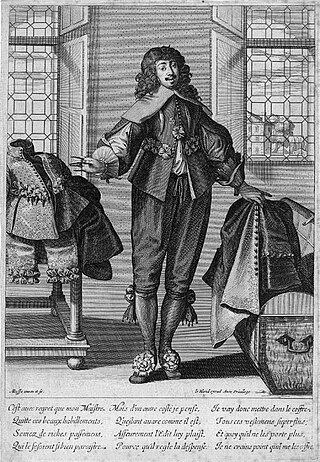
A valet or varlet is a male servant who serves as personal attendant to his employer. In the Middle Ages and Ancien Régime, valet de chambre was a role for junior courtiers and specialists such as artists in a royal court, but the term "valet" by itself most often refers to a normal servant responsible for the clothes and personal belongings of an employer, and making minor arrangements. In the United States, the term most often refers to a parking valet, and the role is often confused with a butler.

A groom or stable boy is a person who is responsible for some or all aspects of the management of horses and/or the care of the stables themselves. The term most often refers to a person who is the employee of a stable owner, but an owner of a horse may perform the duties of a groom, particularly if the owner only possesses a few horses.

A domestic worker is a person who works within a residence and performs a variety of household services for an individual, from providing cleaning and household maintenance, or cooking, laundry and ironing, or care for children and elderly dependents, and other household errands. The term "domestic service" applies to the equivalent occupational category. In traditional English contexts, such a person was said to be "in service".
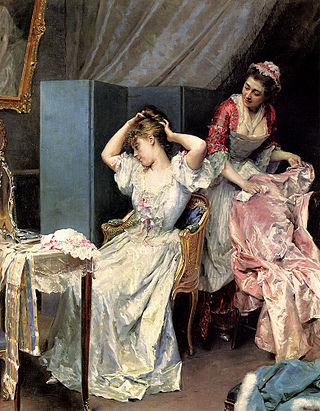
A maid, housemaid, or maidservant is a female domestic worker. In the Victorian era, domestic service was the second-largest category of employment in England and Wales, after agricultural work. In developed Western nations, full-time maids are now typically only found in the wealthiest households. In other parts of the world, maids remain common in urban middle-class households.

A butler is a person who works in a house serving and is a domestic worker in a large household. In great houses, the household is sometimes divided into departments with the butler in charge of the dining room, wine cellar, and pantry. Some also have charge of the entire parlour floor and housekeepers caring for the entire house and its appearance. A butler is usually male and in charge of male servants while a housekeeper is usually a woman and in charge of female servants. Traditionally, male servants were better paid and of higher status than female servants. The butler, as the senior male servant, has the highest servant status. He can also sometimes function as a chauffeur.

Upstairs, Downstairs is a British drama television series produced by London Weekend Television (LWT) for ITV. It ran for 68 episodes divided into five series on ITV from 1971 to 1975.

A coachman is an employee who drives a coach or carriage, a horse-drawn vehicle designed for the conveyance of passengers. A coachman has also been called a coachee, coachy,whip, or hackman.

A housekeeper is an individual responsible for the supervision of a house's cleaning staff. The housekeeper may also perform the cleaning duties themself.
A between maid was a female junior domestic worker in a large household with many staff. The position became largely defunct in the 20th century, as few households needed or could afford great retinues of domestic workers with the elaborate hierarchy of the past.

A page or page boy is traditionally a young male attendant or servant, but may also have been a messenger in the service of a nobleman.
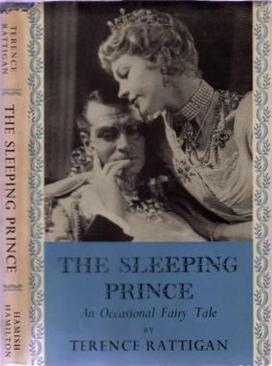
The Sleeping Prince: An Occasional Fairy Tale is a 1953 play by Terence Rattigan, conceived to coincide with the coronation of Elizabeth II in the same year. Set in London in 1911, it tells the story of Mary Morgan, a young actress, who meets and ultimately captivates Prince Charles of Carpathia, considered to be inspired by Carol II of Romania.
A lady's companion was a woman of genteel birth who lived with a woman of rank or wealth as retainer. The term was in use in the United Kingdom from at least the 18th century to the mid-20th century but it is now archaic. The profession is known in most of the Western world. The role was related to the position of lady-in-waiting, which by the 19th century was applied only to the female retainers of female members of the royal family. Ladies-in-waiting were usually women from the most privileged backgrounds who took the position for the prestige of associating with royalty, or for the enhanced marriage prospects available to those who spent time at court, but lady's companions usually took up their occupation because they needed to earn a living and have somewhere to live. A companion is not to be confused with lady's maid, a female personal attendant roughly equivalent to a "gentleman's gentleman" or valet, who would often be from a more working class background.

Servants' quarters, also known as staff's quarters, are those parts of a building, traditionally in a private house, which contain the domestic offices and staff accommodation. From the late 17th century until the early 20th century, they were a common feature in many large houses. Sometimes they are an integral part of a smaller house—in the basements and attics, especially in a town house, while in larger houses they are often a purpose-built adjacent wing or block. In architectural descriptions and guidebooks of stately homes, the servants' quarters are frequently overlooked, yet they form an important piece of social history, often as interesting as the principal part of the house itself.

The British Royal Train is used to convey senior members of the British royal family and associated staff of the Royal Household around the railway network of Great Britain. It is owned, maintained and operated by DB Cargo UK.
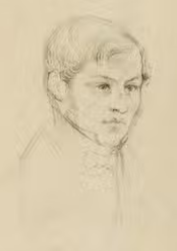
François Benjamin Courvoisier was a Swiss-born valet who was convicted of murdering his employer Lord William Russell in London, England, and hanged outside Newgate Prison on 6 July 1840. A crowd of around 40,000 witnessed his death, including Charles Dickens and William Makepeace Thackeray.

The Only Running Footman is a public house in Charles Street, Mayfair, long famous for its sign, which used to read, in full, I am the only Running Footman. At 24 characters, this was the longest pub name in London until modern pubs were created with fanciful names.